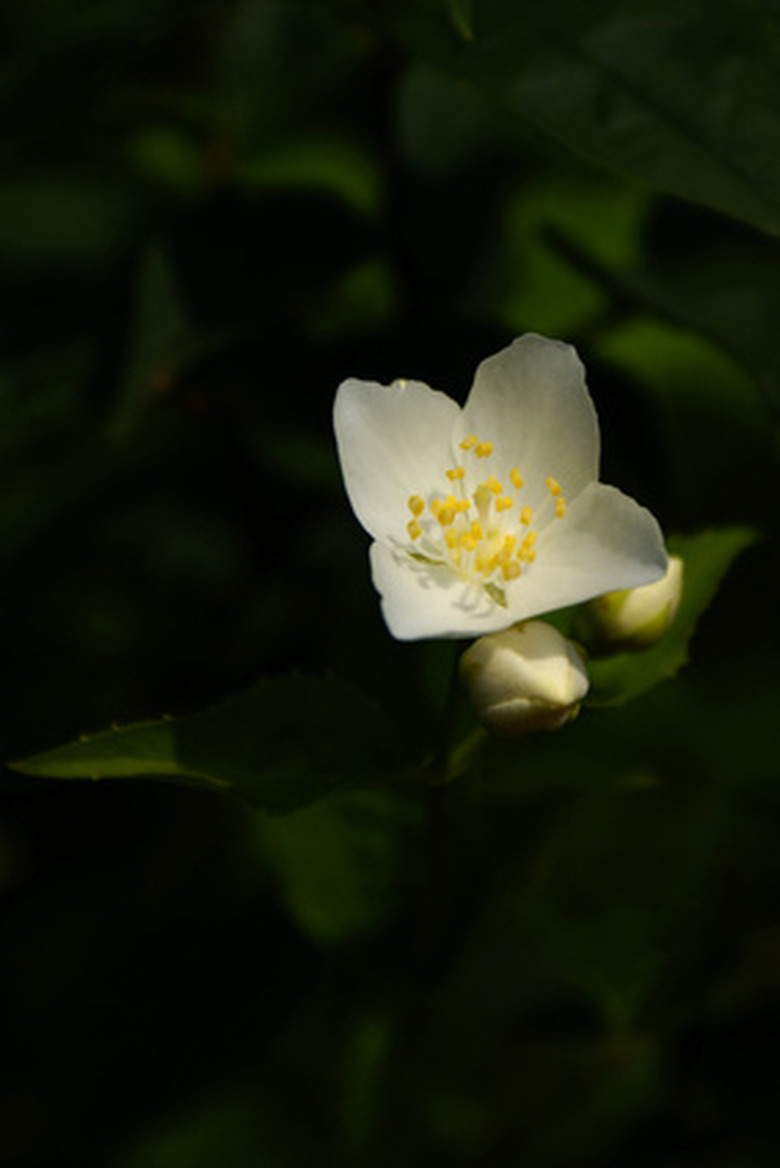Problems With Night Blooming Jasmine
Night blooming jasmine is a compact evergreen with white flowers that only open at night. When the flowers open, they release a cloud of lovely scent. This plant prefers moist soil and full sun, but it can tolerate some shade. It is a low maintenance shrub that requires little more than watering and pruning, but it is prone to certain problems.
Leaf Spot and Leaf Rust
If you notice circular spots on the leaves of your night blooming jasmine, leaf spot could be the culprit. This fungal disease causes distortion of the leaves and leaf drop. By the time the leaf spots are noticeable on the plant leaves, it is too late to treat the plant with a chemical treatment. Prevention is the best medicine in this instance; apply a fungicide as a protectant when the leaf buds first appear, then again in 1 to 2 weeks. Any shrub fungicide will do the trick; just treat according to the label directions. Leaf spot fungi thrive in the cool, wet weather of the early growing season. This problem rarely occurs once the warmer, dryer weather arrives. Leaf rust fungus produces a powdery residue, usually on the undersides of leaves. It ranges in color and can be shades of yellow, brown, and even purple. Leaf rust can also cause distortion of the leaves and defoliation. If you notice leaf rust, remove any affected leaves and rake any fallen leaf debris away from the base of the plant. Leaf spot and rust can cause your night blooming jasmine to look unsightly, but they seldom cause any serious damage.
- Night blooming jasmine is a compact evergreen with white flowers that only open at night.
- Leaf spot and rust can cause your night blooming jasmine to look unsightly, but they seldom cause any serious damage.
Spider Mites
Spider mites are common pests for night blooming jasmine. These critters range in color from brown to red and are hard to see with the unaided eye due to their small size. Spider mites attack the leaves of the plant and feed on the juices inside. This causes bruising and discoloration, and can give the jasmine a bronze or gray appearance. The plant leaves sometimes become scorched and begin to fall off. If left untreated, the plant can become ragged looking and eventually die. Treat and prevent spider mite infestations by applying a pesticide to kill the bugs. Remember to follow the label directions when using any insecticide.
- Spider mites are common pests for night blooming jasmine.
- If left untreated, the plant can become ragged looking and eventually die.
Phytophthora
This fungus causes root death and damage to the plant stem. Phytophthora may be pestering your plant if the stem looks scaly and the foliage looks droopy or discolored. Over-watering is a leading cause of this fungus. Water your jasmine plant just until the soil is moist to the touch. Keep the soil moist but not overly wet.
